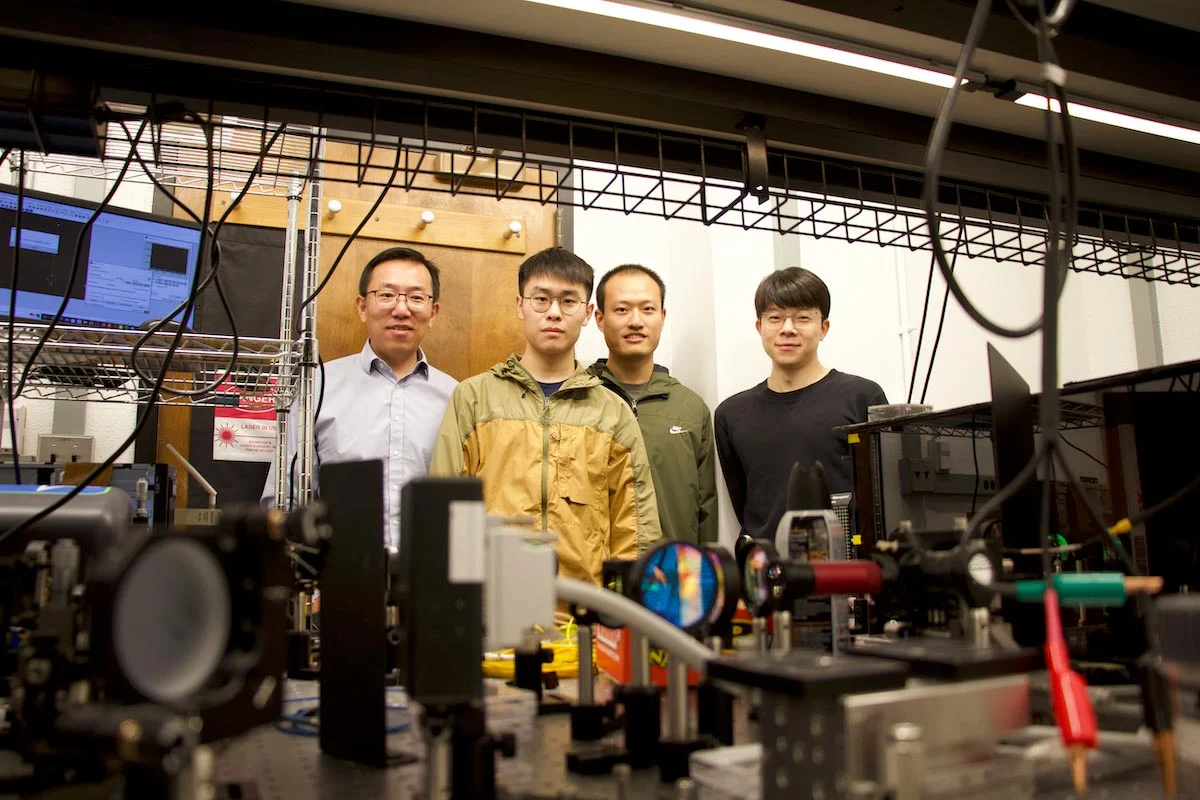Researchers at the University of Pennsylvania’s School of Engineering and Applied Science have developed a revolutionary photonic switch that transforms data transmission in fiber-optic networks. The switch, detailed in Nature Photonics, measures just 85 by 85 micrometers per unit—smaller than a salt grain—while maintaining exceptional speed and efficiency.
The innovation addresses a longstanding challenge in data transmission: the tradeoff between switch size and speed. Traditional photonic switches, which direct data traveling as light pulses through fiber-optic cables, typically sacrifice one attribute for the other. The new technology, however, achieves both miniaturization and high-speed performance through the application of non-Hermitian physics, a branch of quantum mechanics that enables precise control over light behavior.
The switch’s architecture combines silicon with Indium Gallium Arsenide Phosphide (InGaAsP), a semiconductor particularly adept at manipulating infrared light wavelengths used in undersea optical cables. The silicon foundation makes the switch compatible with existing silicon photonic foundries, facilitating potential mass production and industry adoption. The manufacturing process requires exceptional precision, with nanometer-accurate alignment between layers.
Led by Professor Liang Feng, the research team demonstrated the switch’s capability to redirect signals in picoseconds—approximately a billion times faster than an eye blink—while consuming minimal power. This advancement could significantly impact various applications, from streaming services to AI training, by accelerating data movement across global networks.
The technology’s practical implications are substantial. Data centers, which process terabytes of information every second, could become more efficient and faster. The switch’s ability to precisely control light-based network connectivity while maintaining a compact size represents a significant step forward in optical computing and telecommunications infrastructure.
The project’s success stemmed from careful material selection and precise engineering. Doctoral students Xilin Feng and Shuang Wu, key contributors to the research, emphasize the unprecedented achievement of combining miniaturization with high-speed operation. The integration of non-Hermitian physics principles allows for fine-tuned control over the gain and loss of material properties, effectively guiding optical signals to their intended destinations.
This breakthrough has dual significance: it advances both practical applications and theoretical physics. While companies managing data centers and their billions of users stand to benefit from improved data handling capabilities, the switch also provides physicists with a new platform for exploring non-Hermitian physics phenomena.
The project marks the first successful demonstration of non-Hermitian switching in a silicon photonics platform, opening new possibilities for scalable, high-performance optical computing solutions. With a system speed limit of just 100 picoseconds, this innovation represents a significant leap forward in optical data processing technology.
Reference: “Non-Hermitian hybrid silicon photonic switching” by Xilin Feng, Tianwei Wu, Zihe Gao, Haoqi Zhao, Shuang Wu, Yichi Zhang, Li Ge and Liang Feng, 2 January 2025, Nature Photonics. DOI: 10.1038/s41566-024-01579-9




